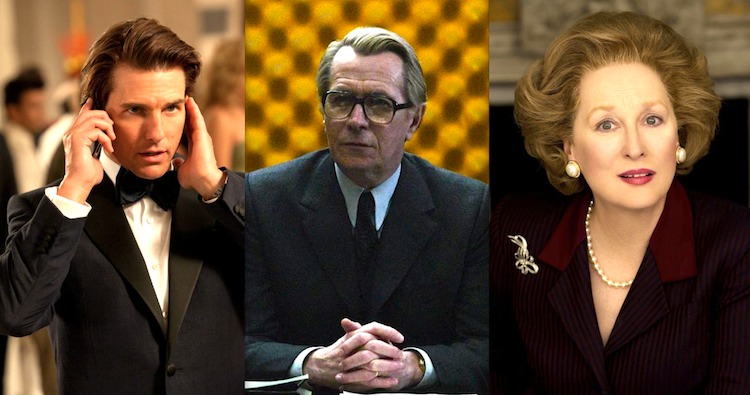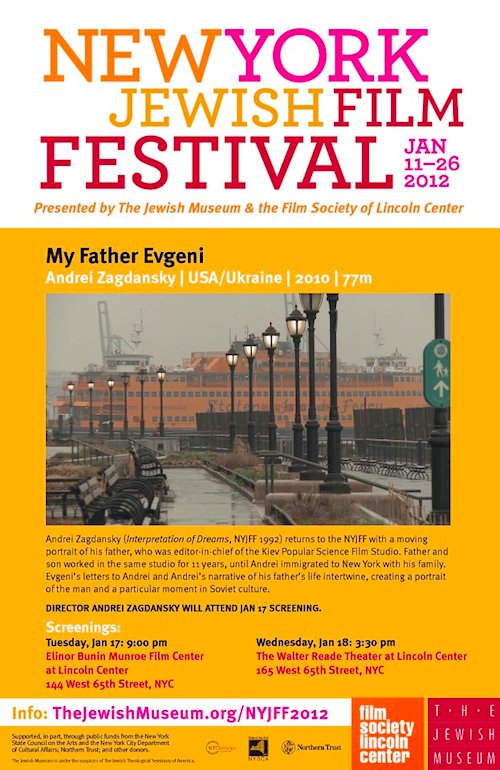[Editor’s Note: The post below appears today at The Huffington Post and the newly relaunched AOL-Moviefone site, where LFM’s Jason Apuzzo and Govindini Murty will also now be blogging.]
By Jason Apuzzo. The Cold War is back – at least at the movies.
This weekend moviegoers can watch Meryl Streep portray ardent Cold Warrior Margaret Thatcher in The Iron Lady, Gary Oldman root out a dangerous Soviet mole from the British intelligence service in Tinker, Tailor, Soldier, Spy, and Tom Cruise race to prevent a Cold War-style nuclear exchange between America and Russia in Mission Impossible: Ghost Protocol.
These films form part of a major Hollywood trend toward reawakening memories of the Cold War – an era that is suddenly returning with a vengeance on the big screen, with long-term implications for our popular culture.
Currently in the midst of an awards-season run, for example, Clint Eastwood’s J. Edgar tells the story of legendary FBI Director J. Edgar Hoover’s decades’-long confrontation with Soviet infiltration of America. Also in the midst of an awards-season run is the ominous new documentary Khodorkovsky, which depicts how little Russia’s authoritarian governing style has changed since the dark days of the old Soviet Union.
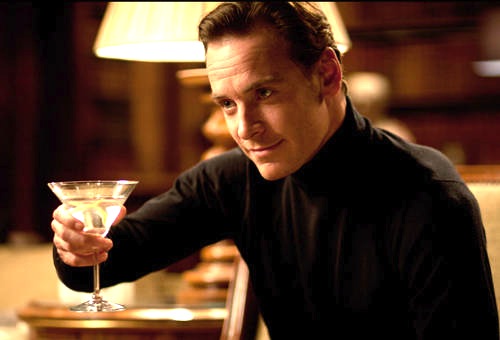
And the trend doesn’t stop there. If Santa slipped new Blu-rays of Transformers: Dark of the Moon, X-Men: First Class, Apollo 18 or The Kennedys into your Christmas stocking, you just got another healthy dose of Cold War nostalgia from those films – because 2011 was a watershed year in Hollywood for reviving America’s long-standing rivalry with all things Russian and/or communist.
So, what’s going on here? Why is Hollywood suddenly reviving Russian communists, spies and autocrats as the go-to villains of choice?
The simplest answer may be that the old Soviet Union is gradually replacing Nazi Germany, Imperial Rome and space aliens as Hollywood’s favorite antagonists. In an industry still hesitant to make films about today’s War on Terror, and with memories of World War II fading, Russian authoritarians – including those of the present day variety – are on their way to becoming Hollywood’s safe, consensus villains of the moment.
This trend began in 2008, with of all things an Indiana Jones film. Set in 1957 at the height of the Cold War, Indiana Jones and the Kingdom of the Crystal Skull featured Soviet communists as the villains, and despite grumbling from critics and internet fanboys the film played well in middle America – taking in over $317 million domestically (a figure even Ghost Protocol seems unlikely to match) and $786 worldwide. Perhaps just as significantly, the fact that the film had been made by Steven Spielberg and George Lucas seemingly gave the green light to other left-of-center filmmakers that depicting Reds as the villains was OK again.
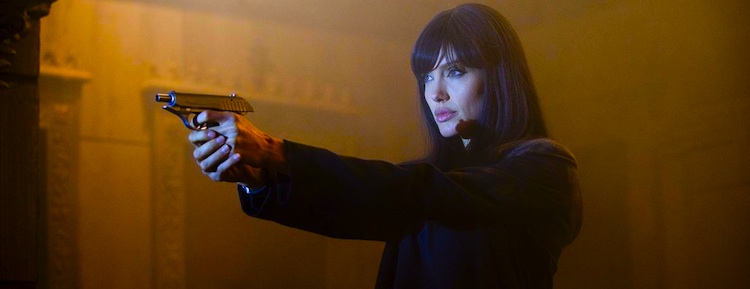
Soon Angelina Jolie was hunting sleeper Soviet agents in Salt (2010), Ed Harris and Colin Farrell were escaping a brutal Soviet gulag in Peter Weir’s extraordinary The Way Back (2010), and even Richard Gere and Martin Sheen were getting in on the act – smoking out a Russian mole in The Double (2011). Released here in the U.S. in 2010, Fred Ward played Ronald Reagan in the French Cold War spy thriller Farewell, and Renny Harlin’s action-drama 5 Days of War (2011) depicted the brutality of Russia’s recent invasion of Georgia.
To be fair, Russians haven’t been the only villains in this trend. MGM’s forthcoming remake of Red Dawn (read a review of an early cut of the film here) depicts a communist invasion of America by the North Koreans and Chinese, similar to the invasion of Australia depicted in Stuart Beattie’s recent thriller Tomorrow, When the War Began (2010). Bruce Beresford’s touching Mao’s Last Dancer (2009) recreated in heartbreaking detail the restrictions in Chinese communist society on artists. And perhaps no recent film captured communist tyranny more vividly than Mads Brügger’s gonzo documentary from 2009 on North Korea, The Red Chapel.
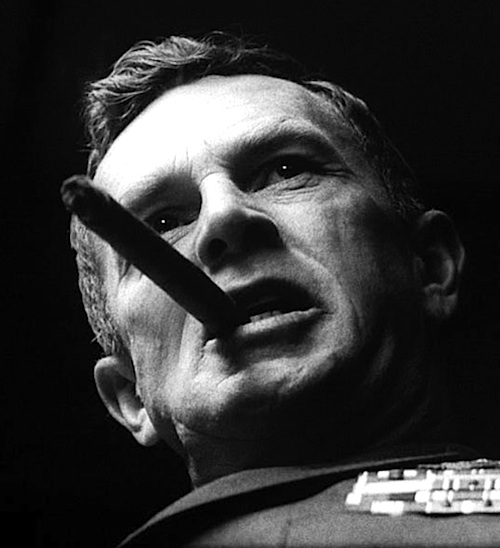
This movie revival of the Cold War – in its many Russian, Chinese and North Korean variations – has intriguing implications. For the past generation, many left-of-center filmmakers have been deeply invested in the notion that the Cold War was a kind of paranoid mirage, a tragicomic figment of Ronald Reagan and Whittaker Chambers’ imaginations. With few exceptions, the basic image created by these filmmakers of the Cold War – codified in films like Dr. Strangelove (1964), or more recently in Good Night, and Good Luck (2005) – has been one of an artificial conflict fueled by American militarism and bourgeois small-mindedness. The sardonic The Russians Are Coming, the Russians Are Coming (1966) serves as perhaps the sine qua non of this genre.
This vision of the Cold War appears to be changing, however, among younger, less ideologically driven filmmakers. These filmmakers view the Cold War simply as a fertile field of storytelling possibilities about the struggle for freedom, in much the same way an older generation viewed World War II. Filmmakers today seem more eager to tell such stories about the Cold War, unearthing the past and depicting the sharp political divisions between East and West, perhaps because these filmmakers detect a continuity between communist tyrannies of the 20th century and similarly repressive regimes today.
After all, Brezhnev and Mao may be gone – but an ex-KGB man still runs Russia, and communists still run repressive regimes in China and North Korea. And America’s relationship with these nations sometimes seems no better than it was before.
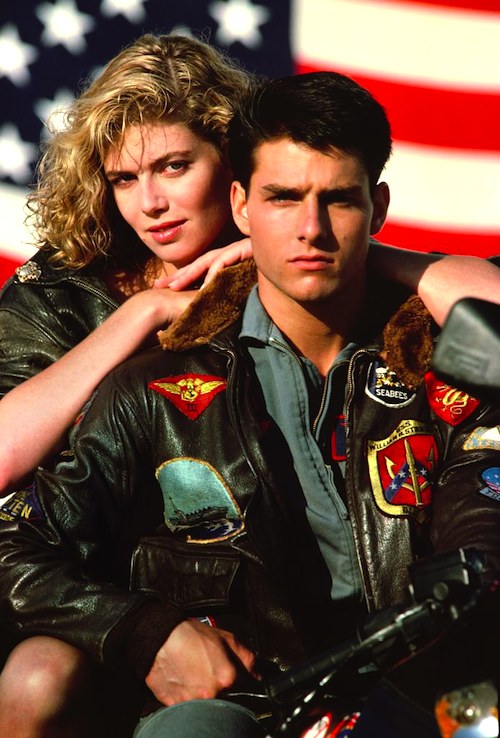
Today’s Hollywood seems alive to these realities as never before, as reflected in a slate of new projects in the development pipeline that channel Cold War themes. Along with sequels to Salt, X-Men: First Class, Die Hard (with Die Hard 5 set to take place in Russia), and even Top Gun, work is also underway to re-boot the Jack Ryan franchise with Chris Pine in a new thriller called Moscow. Remakes of famous Cold War properties like Ice Station Zebra, The Man from U.N.C.L.E., and even Colossus: The Forbin Project are also in development – along with adaptations of the books Londongrad, The Reluctant Communist, and the Red Star comic book.
On TV, HBO and FX are working on competing series about ’80s-era Soviet spies in the U.S., and HBO reportedly has another series in development about Cold War spies in Berlin.
As if that were not enough, Gerard Butler and Ed Harris will soon be trying to stop rogue Russian generals and KGB agents from starting World War III in Hunter Killer and Phantom, respectively. Or if your sensibilities run toward the art house, Andrzej Wajda is currently directing a biopic of Polish Solidarity leader Lech Walesa.
Granted, it shouldn’t be assumed that these films will express a uniformity of opinion about the Cold War, or about current international tensions. Indeed, several recent films like The Iron Lady, J. Edgar, and X-Men: First Class express a pronounced ambivalence about the Cold Warriors they depict.
Watching The Iron Lady, for example, you would hardly know why the Soviet Red Army newspaper labelled Margaret Thatcher “the Iron Lady” in the first place. The film is weirdly evasive of Thatcher’s vital role in ending the Cold War – barely alluding to it except in brief moments of Thatcher with Reagan and Gorbachev, or attending an event commemorating the end of the Cold War. The Iron Lady seems more concerned with Thatcher’s current state of physical fragility than in her momentous alliances with Ronald Reagan, Pope John Paul II and Lech Walesa in hastening the collapse of the Soviet state.
Still, the fascination that films like The Iron Lady or J. Edgar have with Cold Warriors of the past is obvious. And certainly none of these recent films bothers to romanticize the communist cause. Indeed, the days in Hollywood of dueling Che Guevara biopics (Che, The Motorcycle Diaries) – or of Katherine Hepburn wearing a frayed Mao jacket to the Oscars – seem long gone.
The Cold War is back in Hollywood, but this time the idea seems to be to support the winning side.
Posted on January 13th, 2012 at 5:24pm.
